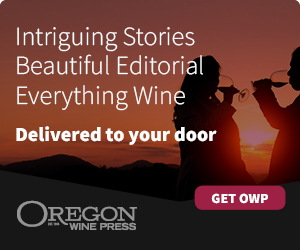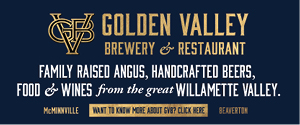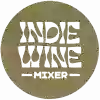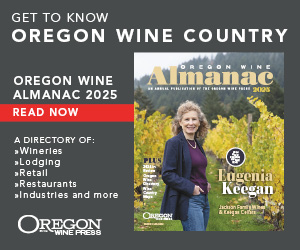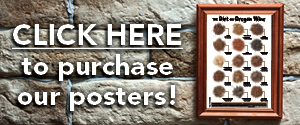Coming Full Circle
Joe Dobbes reflects on his 40-year winemaking career
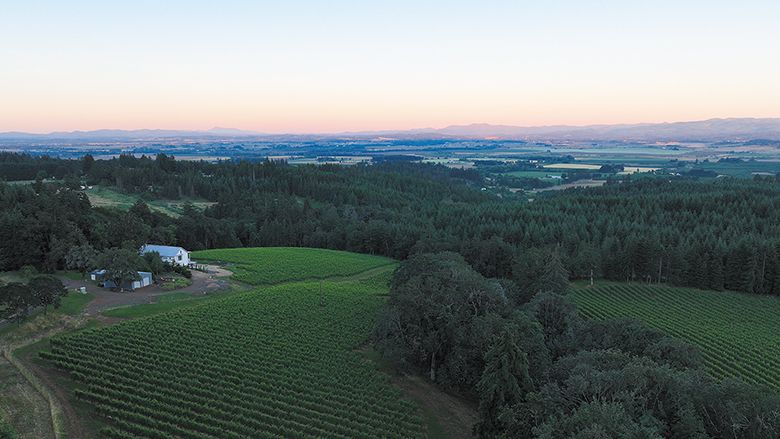
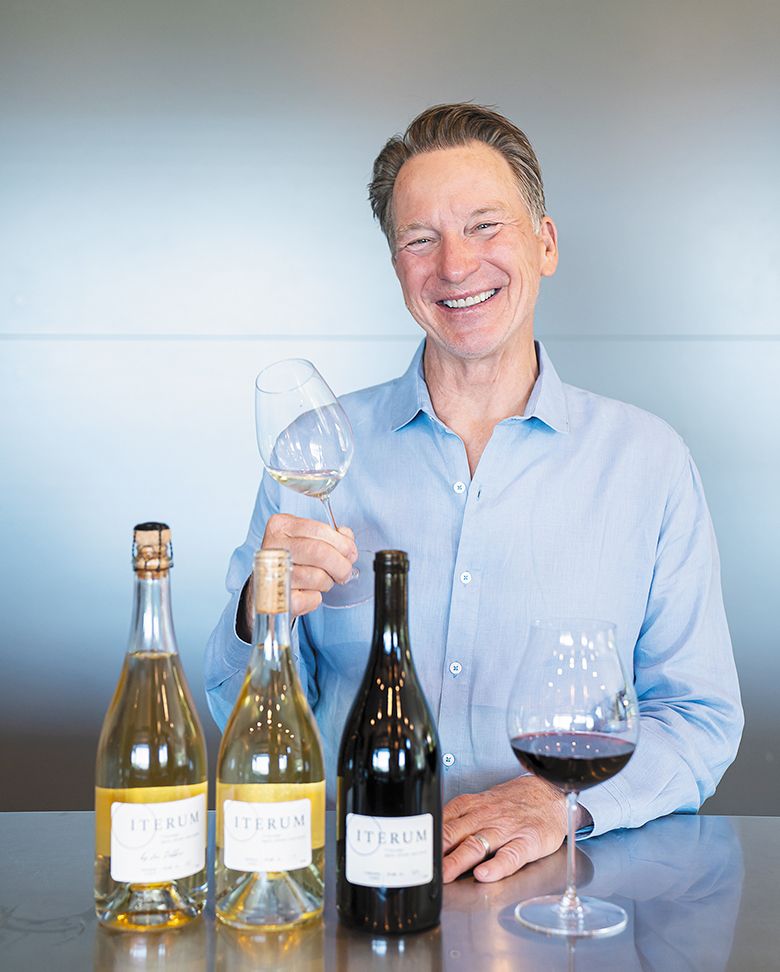
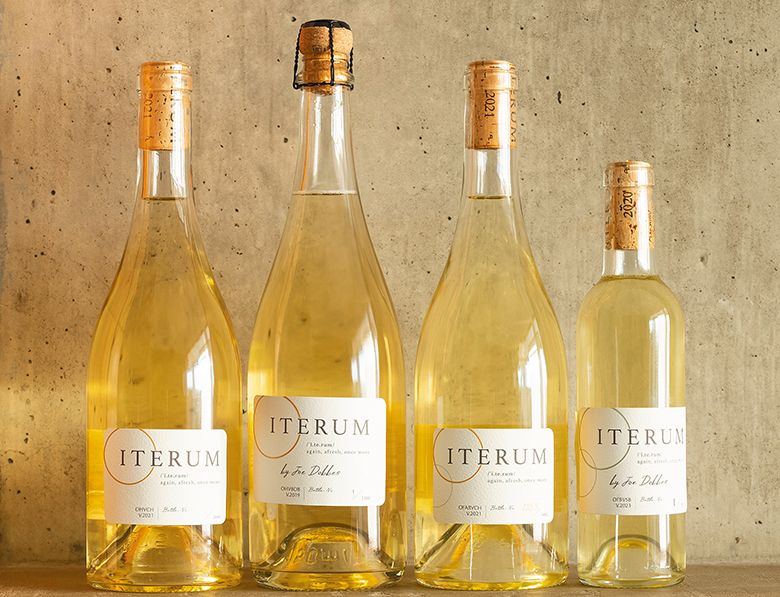
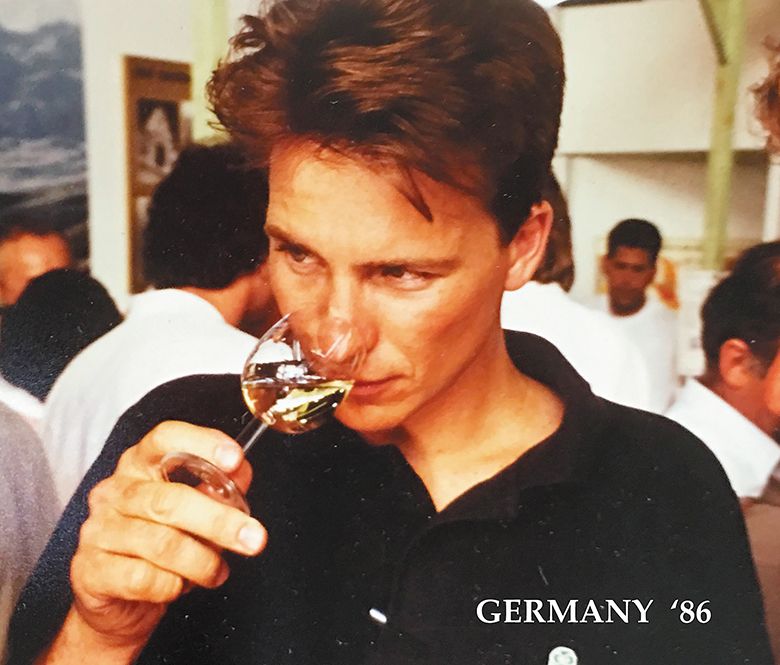
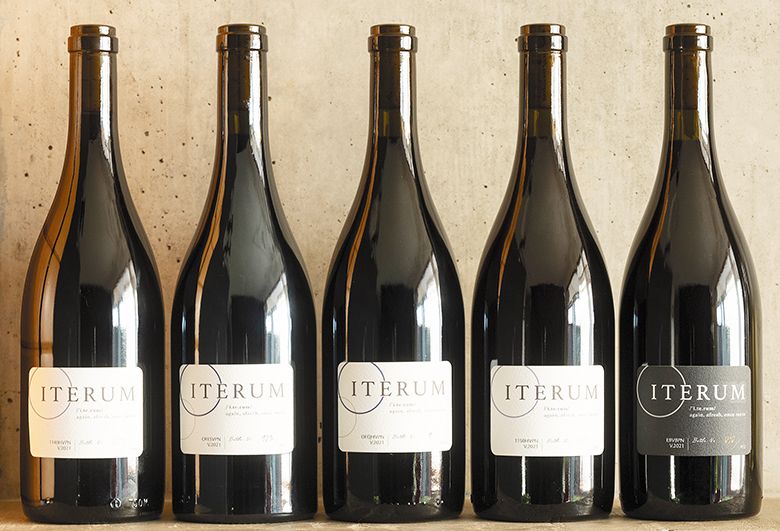
By Kerry McDaniel Boenisch
From stomping grapes in trash cans to launching Wine by Joe and Iterum Wines, Joe Dobbes reflects on four decades of tenacity and innovation. After achieving industry firsts and international reach, his relentless determination has built, rebuilt and now returned to his roots. With his hands in the dirt, Dobbes is excited to be farming organically and making Iterum Wines on his own terms.
Forty years ago, with $50,000 and a stubborn belief in Oregon wine, Dobbes started what would become one of the state’s largest wineries. Now, he’s crafting his smallest, most personal wines yet.
Tell me about all your industry firsts.
JD: My entry into the wine business began in Germany, where I learned the art of crafting true single-berry (botrytis selection) late-harvest wines, known as Trockenbeerenauslese. That formative experience, in 1985, deeply influenced my winemaking path in Oregon.
Throughout my career, I’ve been driven to bring new varietals and styles to Oregon, often being the first to experiment commercially with grapes and techniques not yet seen in the state. From pioneering botrytis single-berry late harvests to introducing Viognier and Grenache Blanc, as well as crafting Oregon’s first frizzante Muscat– my passion has always been exploring and expanding what wine can be here.
Tell me about your parents’ winery and how you started in the industry.
JD: My parents founded Marquam Hill Vineyards in 1987. Their project coincided almost exactly with my own entrance into the Oregon wine industry, though we came at it from different directions.
My father, a physician, started making homemade wine while I was attending grade school. He would bring in grapes from California, and we’d stomp them in the garage in 50-gallon trash cans. He also experimented with fruit wines, and I vividly remember one of his strawberry wines. I smuggled a bottle into a school party. Of course, I got busted, but you could say that was my earliest (and very unofficial) entrée into the wine industry.
In 1988, while I apprenticed in Burgundy with Domaine G. Roumier and Domaine des Comtes Lafon, my father harvested his first vintage. Although we never made wine together, we certainly critiqued each other’s work. His favorite line about my wines was always: “Well, it’s drinkable.” That was usually the cue for the rest of my family to clear out… quickly!
What was the marketplace like when you entered the industry?
JD: In those early years, I immersed myself in the industry, attending every tasting, joining tasting groups and working tirelessly to build my career. Back then, the marketplace was a very different landscape. The shelves at Fred Meyer and local restaurants were dominated by California and imported wines. Getting placements for a small Oregon winery wasn’t just about proving the quality of the wine– it required selling buyers on the concept of “Oregon wine” itself.
In 2002, with nearly two decades of experience and distributor and influencer relationships, I approached Columbia Distributing when starting Dobbes Family Estate. They immediately jumped on our wines, giving us strong early traction.
The Wine by Joe launch in 2004 exceeded my wildest expectations…
Tell me about some ways you advanced your wine brands.
JD: My opinion is that innovation in the wine industry isn’t always about rocket science. Sometimes it’s as simple as watching what everyone else is doing– and then doing something different.
I remember asking my tasting room staff why so many wineries closed at 4 p.m., when people still wanted to taste. We decided to stay open until 6 p.m., and it worked.
But, beyond tasting room hours, the real growth driver came from positioning ourselves with hard-working, motivated people. I didn’t bring a war chest into this industry. I started right out of college, building from the ground up. In 2003, I started the Wine by Joe custom winemaking venture, crushing 500 tons in Year One– and it was profitable from the beginning. That provided the necessary cash flow and capital to reinvest in our brands, build inventory and expand business.
The economics of wine are demanding. When sales increase 10 percent, you need to add 15–20 percent more warehouse inventory for future growth. Having a custom winemaking business solved that challenge, supplying the resources to build our brands.
How did Iterum Wines start?
JD: After 17 years working for others and another 17 years running Dobbes Family Estate and Wine by Joe, I stepped away for two years of reflection. We had a great team, so I told my partners it was time for me to head in a new direction. My wife and I bought our dream property on the west side of the Eola–Amity Hills while I continued to maintain 50 percent ownership in Dobbes Family Estate and Wine by Joe.
I am by no means retired. Instead, I am producing just 1 percent of the volume I once did, giving me the luxury of time to think rather than just doing. The result is some of the best and most exciting wines of my career.
What did you learn while working with other industry luminaries?
JD: Every step along my journey– from Germany to Oregon, back to Burgundy, then again to Oregon– proved to be both imperative and indelible in shaping me as a winemaker.
Each of these mentors and experiences added layers to my philosophy. Germany gave me discipline, Elk Cove supplied authenticity and Burgundy taught me artistry. Ken Wright instilled respect for science as a creative tool and Jim Bernau at Willamette Valley Vineyards demonstrated the importance of vision and leadership in growing not only a winery but an entire industry.
Are you still learning and growing in your winemaking techniques?
JD: My winemaking style is more defined now. When I was making large quantities of wine, there were certain techniques I could not pursue– specifically, using indigenous yeast and malolactic bacteria. It is significantly more challenging… things can go sideways fast. I felt it was too risky to manage with large production.
However, my stylistic goal never changed. I continue to focus on crafting fruit-forward wines that highlight true varietal character.
You have overcome countless obstacles over the last 40 years. What’s your magic mojo– how did you hone your survival skills?
JD: If I had to summarize my secret? Ignorance is bliss.
When I first started, I didn’t fully understand just how tough this industry could be. That might have been a blessing. What carried me through were the values my parents instilled: a relentless work ethic, competitiveness and a deep reservoir of grit. I’ve always loved pushing the envelope, improving, and, yes, proving myself.
In seven short years, Dobbes Family Estate became Oregon’s second-largest wine producer. I would have laughed if anyone had told me we would grow that fast and strong.
Of course, it wasn’t a straight path upward. The wine business demands huge capital investment. Competition was another challenge. Early on, Oregon wine fought for credibility against California and imports. Convincing distributors and retailers Oregon could stand on equal footing meant relentless travel, storytelling and brand building. Then came the economic downturns– each bringing uncertainty to both wine sales and access to capital. Weather extremes, vintage variability and the agricultural side of the business added further layers of risk. But, through it all, persistence and adaptability were my anchors.
Iterum Wines
5917 Orchard Heights Rd. N.W., Salem
Tastings by appt.
iterumwines.com
(503) 779-8840
Kerry McDaniel Boenisch is an author, speaker, wine judge and "Wine Sisters Cheers to Change" Vlog co-host with Atlanta, Georgia Corks and Cuvee wine store owner Regina Jones Jackson. She is currently working on her fourth book, “Fall Down, Stand Up, Learning From Loss Amidst the Vines— The Beginners Guide to Grieving, Empty-nesting and Finding Joy,” due out this fall. Her three books are “Vineyard Memoirs,” “Dirt+Vine=Wine” and “Intertwined— Grief, Gratitude and Growing a Vineyard.”


